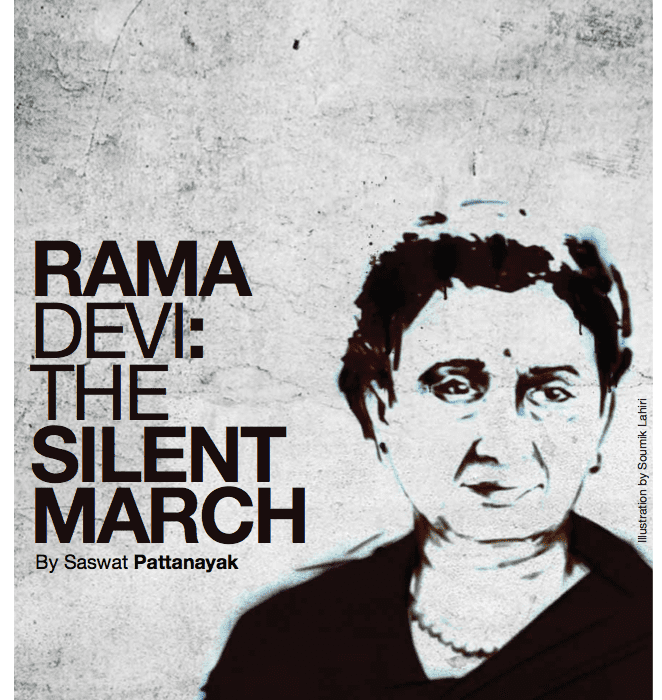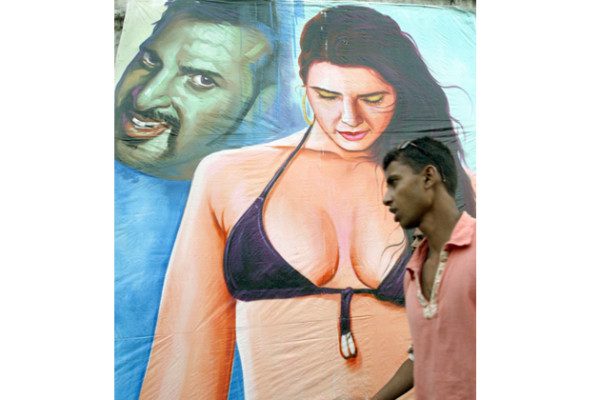If she chose to, she could have led a life of luxury. Born to a deputy magistrate and married at the age of 15 to a deputy collector, Rama Devi instead decided to sacrifice every bit of her comfort in favor of the Indian freedom struggle. When she joined the Congress, she was 22.
Rama Devi and her husband Gopabandhu Choudhury belonged to wealthy families of landlords. And they consciously dedicated their lives to uplift the causes of the landless, starting with donating all of their personal properties, jewelries and lands. Rama Devi also gave away all her expensive saris. This was far from a merely symbolic gesture. She was a committed Gandhian all throughout her life, and never hesitated to be the example she wanted others to follow.
Rama Devi gave up not just her materialistic luxuries, but also her religious sanctities, her upper-caste privileges, her class mannerisms, and gladly embraced not just poor lifestyle choices, but also chose to live amidst the indigenous peoples, speaking their languages, adopting to their cultural givens. She fought throughout her life against untouchability, for social justice of the downtrodden, and against religious superstitions.
In fact, behind Gandhiji’s evolving greatness and unfailing optimisms were the selfless sacrifices of Rama Devi and her comrades. If Gandhiji’s core values addressed the poorest among the poor, and if his grand vision was to see an India without caste oppressions, it was Rama Devi leading the way as his indefatigable soldier.
Gandhiji gave numerous glowing tributes to Rama Devi and how her dedication was inspirational in the larger quest to rid India of its greatest shame of untouchability. One of them reads: “Our girls go to the Harijan colony every day. Five girls from Rama Devi’s Ashram walk in front. They ask for no amenities. On their own they get up at three in the morning and set out. They work hard throughout the day. I marvel at their capacity for walking bare-footed. They never know what fatigue is. And though many of them had been brought up in the lap of luxury they put up with all the trials of a march which was by no means a soft job. If the work is continued with the same enthusiasm and earnestness that were exhibited during the march and the workers concentrate upon Harijan service in the villages more than the cities, the result will be startling. If I live like this I feel that untouchability would be soon wiped out….I congratulate these sisters of Cuttack on their devotion to the cause of the much-desired reform. Women are special custodians of all that is pure and religious in life. Conservative by nature, if they are slow to shed superstitious habits, they are also slow to give up all that is pure and noble in life. In this struggle for religious reform, therefore, the women of India may be expected to take a leading part. I hope, therefore, that the example of the women of Cuttack will prove infectious and that the work begun by Shrimati Rama Devi and her companions will be continued in spite of the difficulties and disappointments that they might have to face.”
As a committed Gandhian, she visited to negotiate and bring peace to several sites where communal violences were rampant. She was jailed multiple times as a freedom fighter in 1930, 1932 and prominently during Quit India movement of 1942. After India gained freedom, Rama Devi continued her Gandhian missions with Bhoodan and Gramdaan movements. Under her exemplary leadership, Orissa had the most success among all Indian states, where she managed to get people donate thousands of acres of lands. Inspired by her, Vinoba Bhave visited Orissa subsequently in 1955 and 1963. With Bhave’s recommendations, in Assam and Maharashtra, Rama Devi presided over Sarvodaya Movements. She continued a lifetime of serving the humanity through picketing liquor stores and gambling joints, treating lepers and people with disabilities, physically rendering care in drought and flood affected regions all over India.
Indeed, much has been documented on the reformist contributions of both Gandhiji and Dr Ambedkar. Not very many instances are recalled – even as mere footnotes – of the actual grassroots activists who committed themselves to fight the social evils that characterize India. Rama Devi preferred to work over winning laurels, to serve instead of being interviewed, to associate with the lowest section of the societies than being recognized at the highest alters of political organizations. And so she emerged to represent such lesser known agencies as the “Anti-Untouchability League” and the “Servants of Untouchables Society”. After all, Obscurity was her middle name. And Servant was the first.


